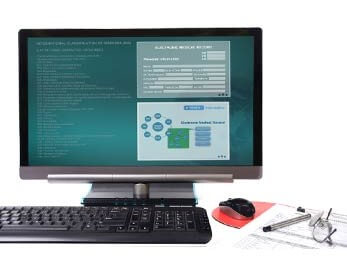Interviews & Features
The digital revolution in the health sector has long promised a future of a smoother, faster healthcare system: a new reality where hospitals’ clinical workflow will be streamlined, where interactions with insurance companies will be automated, and spreadsheets and fax machines will become relics of the past.
The concept of patient privacy is at least as old as the Hippocratic Oath, fragments of which date back to the third century. Today, it is as relevant as ever. Not only does privacy remain fundamental to patient-provider trust, but it’s also taken on new meanings. Health apps, fitness trackers, and electronic health records (EHRs) are all part of an explosion of health-related technology that, unified by the internet, has created a torrent of personal health data stored in various states of security.
Technology in Healthcare: Medical Education Software
September 15, 2023Virtual reality simulations, augmented reality tools, and advanced medical software are driving transformation in medicine, offering hands-on experiences that allow students to practice complex procedures and develop sound judgment without real-world consequences. This educational technology cultivates confidence and proficiency and deepens understanding of patient care nuances.
How Good Data Improves Patient Outcomes: Best Practices & Advice
September 12, 2023For more than 4,000 years, humans have been keeping medical records. Everything from examinations, treatment plans, outcomes, and follow-ups have been charted on papyrus, tablets, and ancient books. In more modern times, paper charts have been the gold standard till they were replaced with electronic health records (EHRs) in 2011. These records have served individually to care for individual patients and aggregately to inform decisions system wide.
Medical Coding and AI: The Future of EHRs
August 29, 2023As artificial intelligence (AI) has become more advanced in recent years, technologists and healthcare professionals have noticed many opportunities for AI-based tools to improve the healthcare industry.
The Challenges of Medical Tech Interoperability & Security
August 18, 2023Not all medical devices talk to each other or to a particular EHR system, making it difficult for healthcare providers to access and analyze patient data leading to gaps in patient care and missed opportunities to improve outcomes. The lack of interoperability is a major challenge in integrating medical devices with electronic health records, and any potential solutions must address IT and OT security issues to ensure patient health records are secure, not only for privacy reasons but also HIPAA requires it.
The Biases of Medical Technology—and How to Overcome Them
August 1, 2023Bias in medicine is pervasive and results in systematic errors or prejudices that can influence medical decisions, research outcomes, and patient care. These biases, conscious or unconscious, can be towards race, gender, socioeconomic status, or personal beliefs of healthcare providers. While healthcare providers can be made aware of their bias and develop techniques to combat it, bias in medical technology can only be addressed by changing the hardware or software.
Predictive Analytics & AI in Health Data Management
July 14, 2023Modern healthcare runs on data. In 2018, the healthcare industry generated approximately 30 percent of the world’s data volume. That share has likely only increased in recent years, with the growing adoption of wearable tech, remote patient monitoring, and electronic health records. But raw data is only as valuable as the insights one can derive from it.
Health data is at the core of modern healthcare, from in-person visits to cutting-edge virtual care. It is collected, stored, and shared in ever greater quantities. But that data is only as powerful as its ability to be matched to the right patient. An incomplete or inaccurate record can be more dangerous than no record at all.
Video game enthusiasts have long enjoyed escaping reality to roam simulated worlds and alternate universes, from prehistoric jungles to sci-fi fantasy lands. However, the two-dimensional nature of video games has always been a glass ceiling, blocking the complete suspension of disbelief that gamers seek.










